1901: Some 27-Foot Coal Cars in C&Sn3
1901: Some 27-Foot Coal Cars in C&Sn3
|
This post was updated on .
Back in July, before my wife fell and fractured her pelvis, I did a build up of 8 pair of Michael York's 14 ton, "type C" freight car trucks, the second Shapeways iteration in Sn3. Now that I know how to properly assemble the printed trucks, so they roll freely, having a stash of painted, and finished operating trucks was the impetuous to finishing up some TOTC projects. Over a year ago I began building up three of the old Cimarron Works resin kits for the UP built 27 foot coal cars--one of the 1882 versions and two of the 1883 versions. I've posted photos of the 1883 cars, so it was time to finish the 1882 car, now that the trucks were available.
HISTORY: Not long after the Union Pacific acquired financial control of the DSP&P, the Omaha Shops began building new narrow gauge freight cars for the little Colorado subsidiary. In September of 1882 Omaha outshopped 100 27 foot, 14 ton coal cars, numbered DSP&P 300-399. During the receivership they were numbered in the DL&G series 8039-8213, comingled with the 1883 UP built coal cars. In 1899 they were renumbered in the C&S series 4626-4767. They were gone by 1909. Ron Rudnick's plans for the 1882 coal cars show deep 12" side sills, tapered at the ends, and a short 24' tall coal box. Ron depicts the cars as having needle beams without queen posts, but with a total of 4 truss rods. I've always found this odd, as no other inherited freight car from the Central and South Park had more than two truss rods. The first cars with 4 truss rods are the St. Charles coal and box cars of 1897-98. Here is how the cars looked when new: 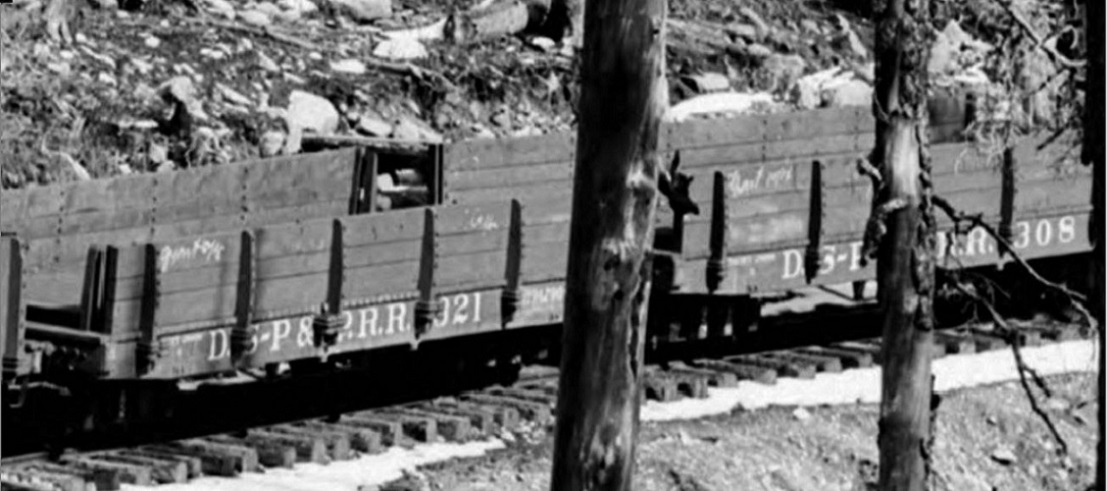 IMHO both cars appear to have a visible truss rod crossing a queen post--and there aren't a lot of truss rods visible. So I decided to build my model with only two truss rods with queen posts. THE MODEL: I finished the car and gave it a coat of paint. I had planned to letter the car in the C&S "Colorado Road" scheme, like this c.1906 photo that Daryl Leady once posted: 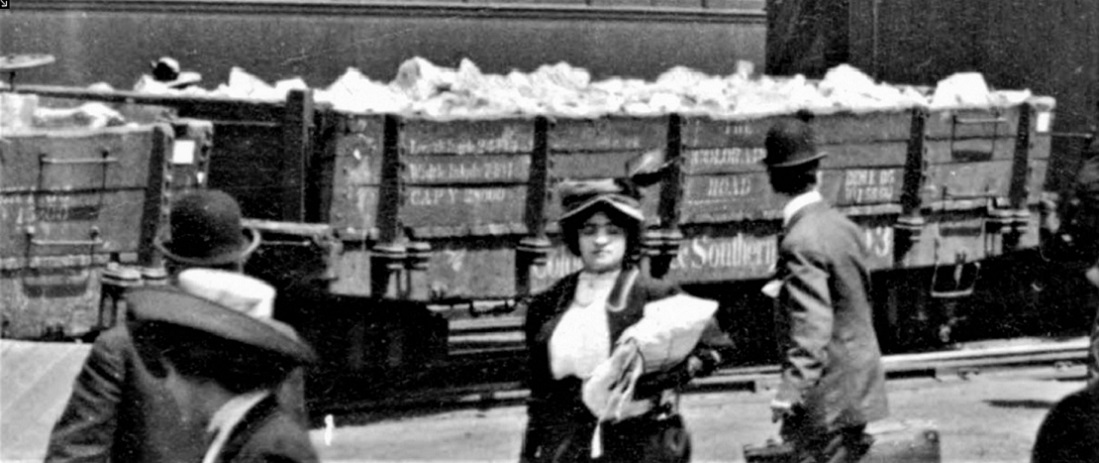 But it turns out that the same Cimarron Works lettering set that I used for the 1883 coal cars (CWDS-14) didn't work. Try as I might, I couldn't get the "Colorado & Southern" on the side sills to fit between the stake pockets. What to do?? Earlier this year, Dave Eggleston and I discussed just how long it took the new C&S to finish re-lettering the inherited UPD&G and DL&G cars into the new C&S scheme. Dave shared ORERs that indicated some cars were still in the old UP lettering as late as early 1904. Dave suggested that occasional cars lettered for the predecessors might be interesting for a 1901 roster. As it turned out, going through my decal stash, I had several sets of CWDS-17, "DL&G Coal Car". So how were the 27 foot coal cars lettered for the DL&G? Not many good photos. The 1890s photo at Pine has a couple of 26 foot coal cars: 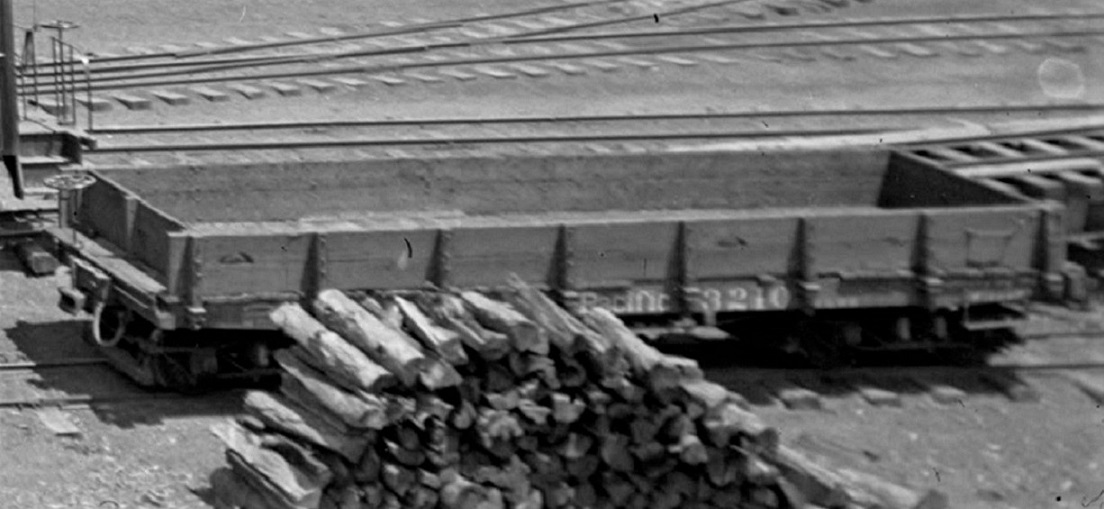 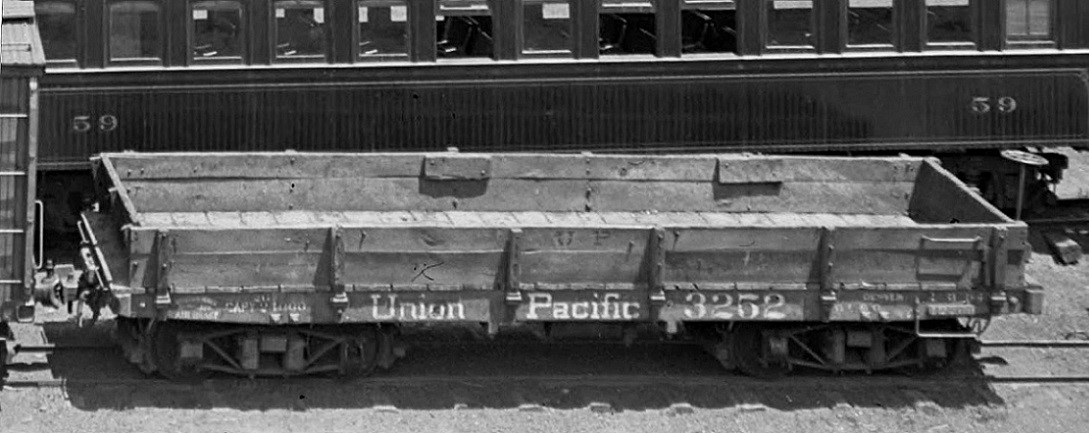 Both cars have "Union Pacific" on the side sills and car number, small DL&G subscript. Neither have UP reporting marks or number on the sides or end of the coal box. Fortunately there is one DPL photo at Blackhawk that shows one of the 1882 coal cars specifically: 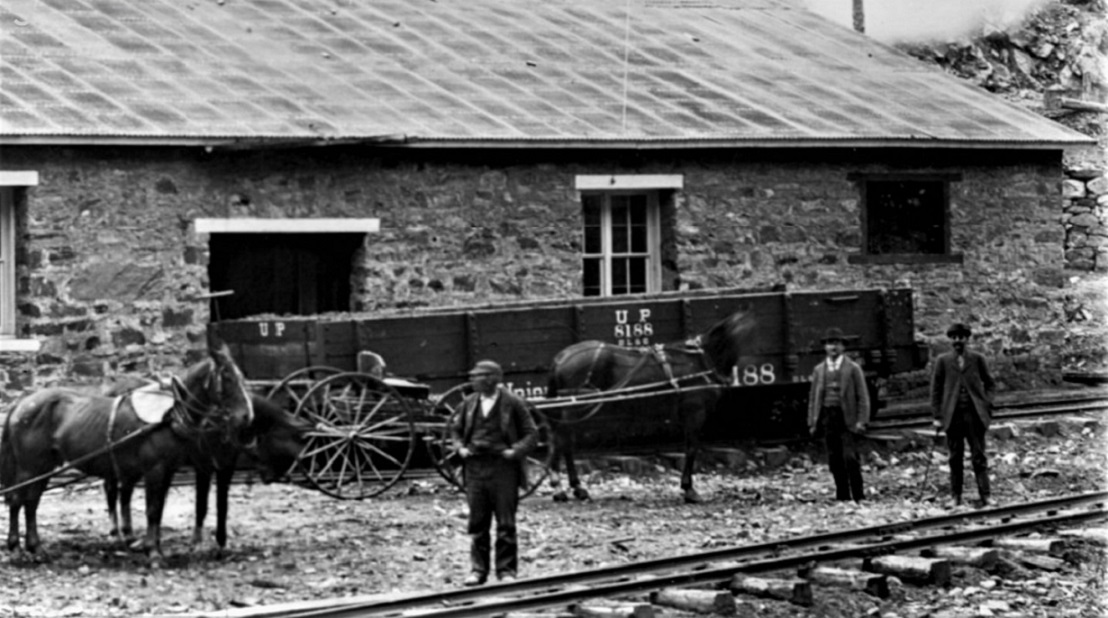 Note that the end has UP reporting marks but no car number. As the ends were removable, I suspect that the "UP" was there to establish ownership, in case one of the ends was left in a ditch, beside a distant siding. Anyway' s, this is how the car turned out: 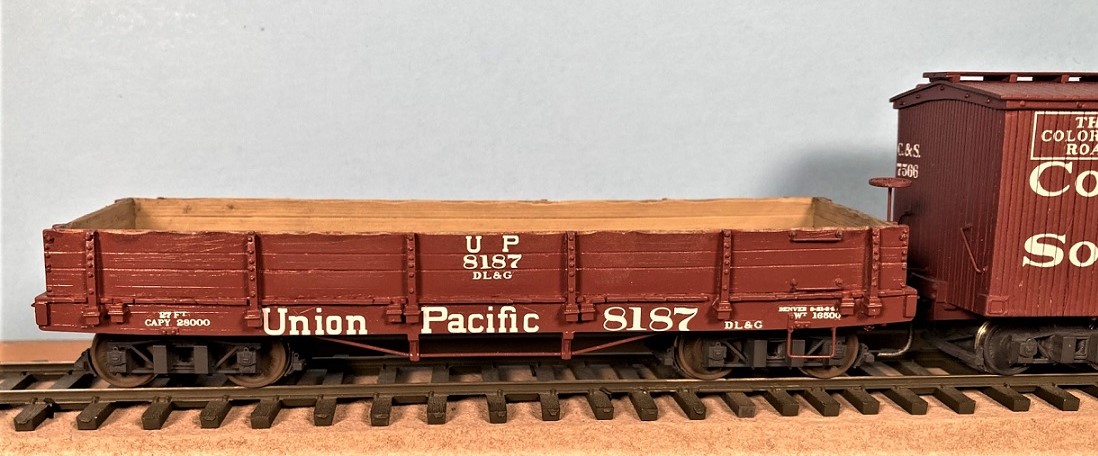 Hat tip to Keith Hayes: I finally found a way to paint styrene or resin and have it look like unpainted wood, to my satisfaction. Keith recommended using Rustoleum Camouflage "Sand", right out of the rattle can. When dry, I used black and brown leather dyes in alcohol in multiple light washes to bring out the wood grain and space between the boards. 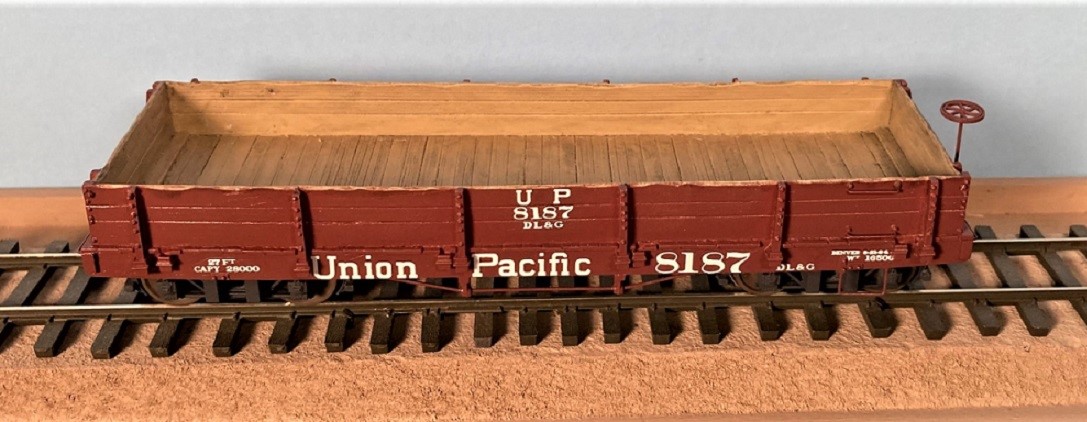 The car still needs a clear coat to seal the decals and a spray of Dullcote prior to weathering. I will then re-install the couplers and call it done. CAR WEIGHTS AND LOADS: I'm quiet pleased with my 27 foot coal cars. Unfortunately the kits make no provision for weights and the finished cars are far too light to operate reliably. I decided to add removable loads to the cars, to hide a flat sheet of lead. For the 1882 car I assembled a laser cut lumber load (can't remember where I got it). I substituted the weight for the bottom two layers of cut lumber. I didn't like the visible char at the ends of the laser cut boards, so I came up with a paint mix that pretty much matched raw bass wood: 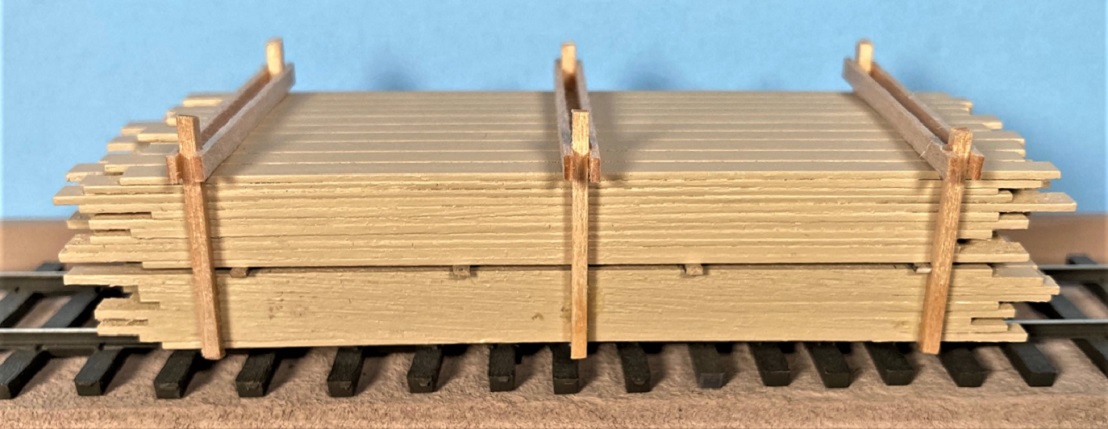 This is how it looks installed into the car--a load of freshly cut Doug fir from the sawmill at Keystone: 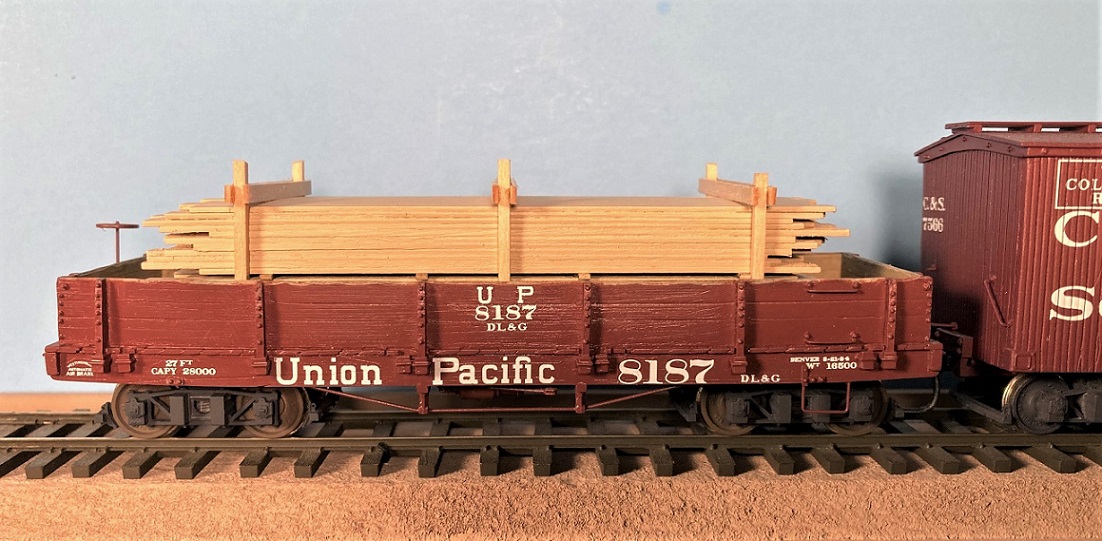 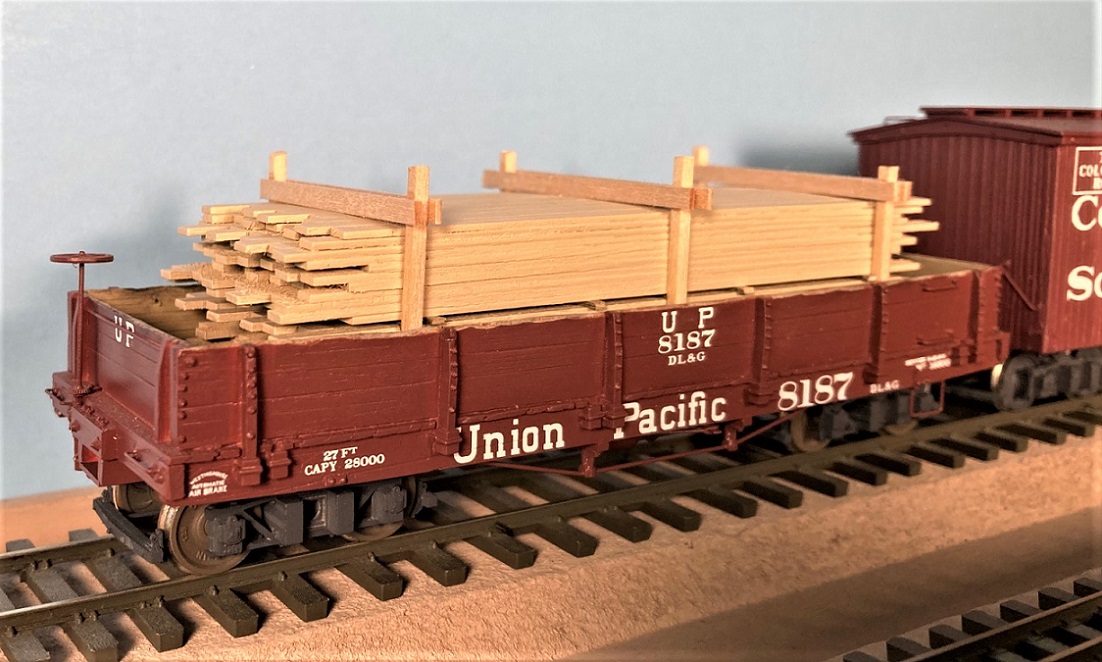 For my two 1883 coal cars, I decided to hide the weights with removable coal loads. I cut 1/2" pink insulation foam into rectangles that would loosely fit inside the coal box, and used silicone adhesive to attach the weight to the bottom. The top of the foam was carved a bit to create piles of coal over the trucks. The entire load was then brush painted with Polyscale black. A thick coat of black paint was then brushed on an inch at a time and crushed coal was sprinkled onto the wet paint. When dry, additional coal was added around the first layer, moistened with absolute alcohol and then flooded with 1:1 white glue and water. When everything was dry, the weights/loads were installed:  Both cars are now loaded with Baldwin coal consigned to Breckenridge. BTW, the coal is real C&S coal. Jeff Young was kind enough to mail me some C&S locomotive coal that he had collected at the #73 / #75 wreck site on Boreas Pass. A sturdy plastic bag and a hammer reduced it to 1:64 scale. Other than some weathering, this project seems to be wrapping up. But then, I'm thinking about masking off all the lettering on car 4638 and giving it an overspray of a lighter freight car red, to represent the freshly painted areas on the sides and sills, that obscurred the UP lettering on cars that were not completely repainted, like this: 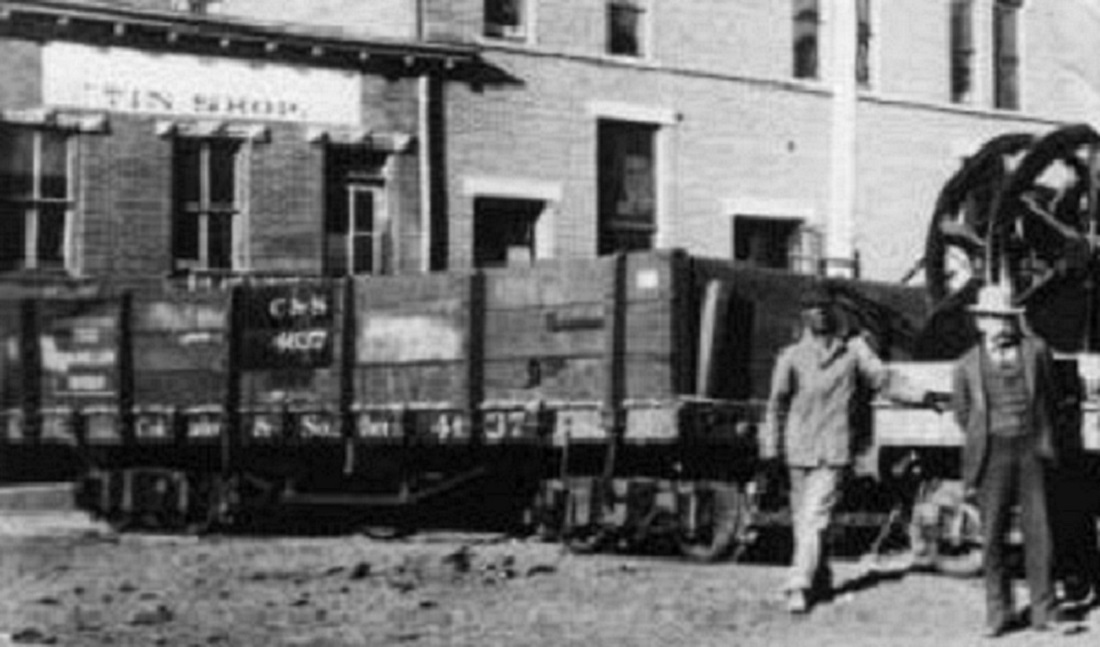 So, maybe I'm not finished after all . . .
Jim Courtney
Poulsbo, WA |
Re: 1901: 27-Foot Coal Cars in C&Sn3
|
Nice Jim: NICE!

UpSideDownC
in New Zealand |
Re: 1901: 27-Foot Coal Cars in C&Sn3
|
In reply to this post by Jim Courtney
Wow, beautiful work, Jim!
And I really like your results with the loads. I'm going to try to do the same with some chunks of silica rock that I've found by the walking paths near the old mine spur locations here on the old Silica branch in my neighborhood. Would you be so kind as to remind me of the primer and paint color that you are using for your exterior body color for those cars? I'm building a old Cimarron caboose kit myself. Thanks in advance! Norm
Norm in Littleton, CO
- on the C&S Silica Branch |
Re: 1901: 27-Foot Coal Cars in C&Sn3
|
Thanks for the kind words.
Norm, I used Tamaya fine grey primer. Body color is my standard go to stash of Polyscale "Rock Island Maroon" (Derrell Poole once matched this color to some fresh paint under the cupola seat of the C&S caboose at the CRR Museum). Since Polyscale paints are now defunct, Tru-Color Paints have a Rock Island Maroon that is very close. My incandescent lights on my test track make the cars appear more red than they actually are.
Jim Courtney
Poulsbo, WA |
Re: 1901: 27-Foot Coal Cars in C&Sn3
|
Jim, so nice to see the UP lettering on that car!
Great job overall. Excited to see this project evolving.
Dave Eggleston
Seattle, WA |
«
Return to C&Sng Discussion Forum
|
1 view|%1 views
| Free forum by Nabble | Edit this page |

